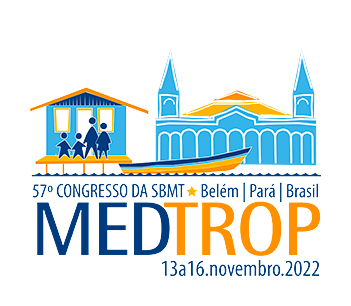Dados do Trabalho
Título
Use of digital PCR in the absolute quantification of influenza virus isolates during the 2021 extemporaneous epidemic in Brazil.
Introdução
Influenza is a zoonotic virus that causes symptoms ranging from asymptomatic to severe, and can lead to death. According to the WHO, about three to five million infections per year, with 250 to 500 thousand fatal. Among the numerous diagnostic tools available, real-time RT-PCR is the gold standard for virus detection since last decade. However, this methodology has nuances that must be considered during its execution, specially to setting up thresholds of low viral load samples, affecting the final result
Objetivo(s)
In this work we evaluated the digital PCR as an alternative protocol for influenza quantification establishing the LOD for this protocol, which consists of the use of nanowells to carry out the reaction, statistically guaranteeing that only one RNA strand is in each well.
Material e Métodos
For this, we used the same sets of primers, probes and samples in both experiments. In addition to the same annealing temperature conditions and respecting the particularities of each enzyme used in each methodology, in order to minimize confounding factors. For the dPCR test we used the QiAcuity One system from QiAgen, as a 24-well nanoplate with 24,000 partitions, and for the qPCR the 7500 Real-time PCR system from ThermoFisher. Four dilutions (1:10-4, 1:10-5, 1:10-6 and 1:10-7) of the viral isolate were used, and these dilutions were chosen based on standard curves already established in the laboratory.
Resultados e Conclusão
At the highest dilutions (1:10-7) we had an average Ct value of 42.07 for a reaction with 45 cycles, while in dPCR no copy was detected. This helps to clarify doubts about the number of copies at higher Ct values. For the other dilutions we obtained higher Ct values as the sample was diluted, and for dPCR the number of copies decreased as a result of the dilution. Both results were as expected, having a close relationship between Ct values and copy number (R2=0.74). In addition to corroborating the standardization of the protocols in question, since the copy numbers detectable in the dPCR, it was compatible with the expected Ct values, based on the standard curve. Such data demonstrate that the dPCR methodology helps in solving cases in which Ct values are high, considerably reducing doubts about the positivity of these cases.
Palavras-chave
Digital PCR, Absolute quantification, Influenza virus
Área
Eixo 10 | Outras infecções causadas por vírus
Categoria
(Concorra com apenas um trabalho) Concorrer ao Prêmio Jovem Pesquisador - Graduado
Autores
Rodrigo Moura Reis, Eduardo Mello Volotao, Ana Carolina C D Silva, Thauane Silva, Ana Carolina D. P D. P Rodrigues, , Valeria Pereira Nacife, Maria Ogrzewalska, Marilda Agudo Mendonça Teixeira Siqueira, Fernando Couto Mota
